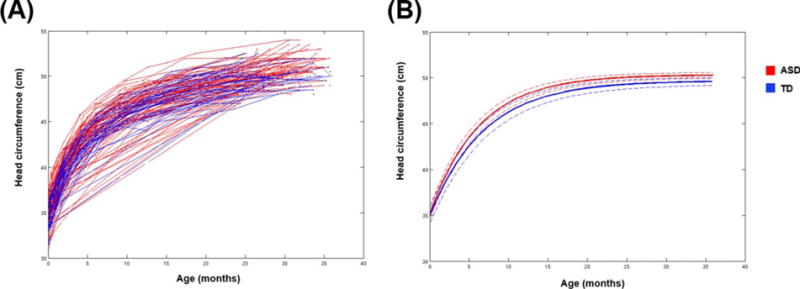Figure 4.

Results from longitudinal analyses of head circumference. (A) Head circumference data for ASD and TD subjects collected retrospectively from medical records. Each line connects the data points collected from an individual subject. A total of 1162 measurements (6.5 measurements per subject on average) were collected from medical records, spanning from birth to 36 months of age. (B) Predicted growth trajectories for head circumference for TD boys and all boys with ASD. Dashed lines indicate the lower and upper bounds of the 95% confidence intervals. There were no differences between ASD and TD boys in head circumference at birth, but the ASD boys had a significantly greater final overall head circumference and a significantly greater rate of growth
